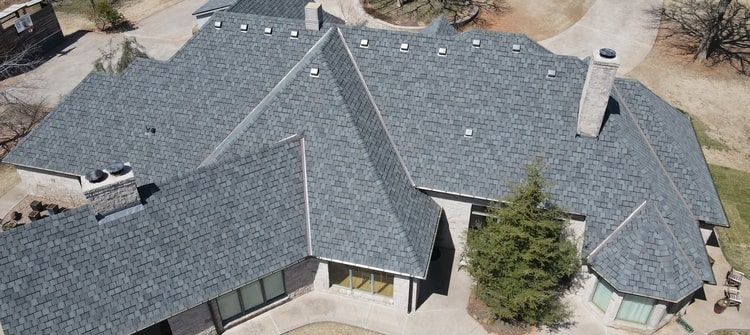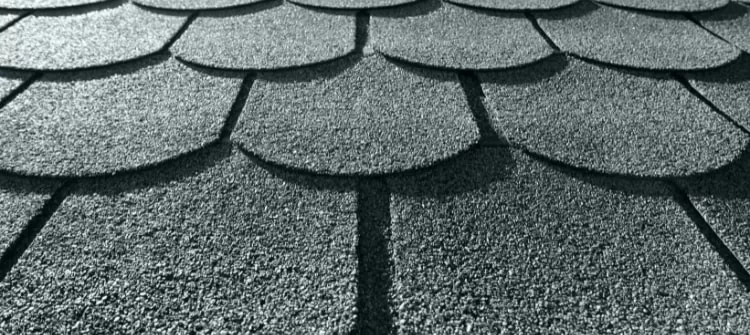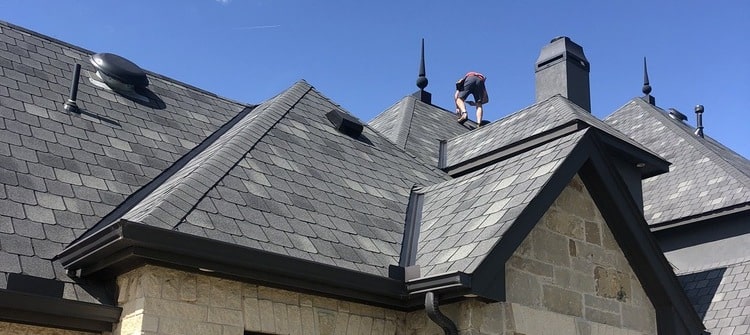Roofing is an integral part of your home, offering protection from the elements and contributing to your property’s overall aesthetics and value. However, like every other component of your house, it has a lifespan. Recognizing the signs that it’s time for a new roof can save you from costly repairs and potential hazards.
This ultimate guide will navigate you through the indicators of needing a new roof, ensuring you make timely decisions for your home improvement.
Signs You Need a New Roof
Understanding when to replace your roof is crucial for maintaining your home’s safety and avoiding costly repairs.
Let’s look into the unmistakable signs that your roof may need attention:
Visible Wear and Tear: Over time, your roof can show signs of aging, such as cracked, curling, or missing shingles. These signs are cosmetic issues and indicators that your roof’s protective capabilities are diminishing.
Age of Your Roof: A roof’s lifespan depends mainly on its material—asphalt shingles, for example, typically last 20 to 25 years. If your roof is nearing or has surpassed its expected lifespan, it’s time to consider a replacement.
Leaks and Water Damage: One of the most obvious signs that you need a new roof is the presence of leaks. Water stains on ceilings or walls indicate that your roof’s integrity has been compromised.
Sagging Roof Deck: If you notice a sagging roof deck from the ground, it’s a sign of structural issues that need immediate attention. This can indicate trapped moisture and weakened decking material.
Missing Shingles: Missing shingles are more than an aesthetic issue; they represent gaps in your roof’s defense against the weather.
Granules in the Gutters: Finding granules from your shingles in the gutters is a sign of advanced wear and indicates that your roof may be nearing the end of its useful life.
Daylight Through Roof Boards: If you can see daylight through the roof boards from your attic, some gaps could allow water to enter your home.
High Energy Bills: An unexpected increase in your energy bills could be due to poor roof insulation and ventilation, allowing heat to escape during the winter and enter during the summer.
Moss and Algae Growth: While some moss or algae growth is average, excessive growth can signal moisture retention, damaging your roof over time.
Neighborhood Roof Replacements: If many of your neighbors are getting new roofs, it could be a sign that the roofs in your area, likely built around the same time, are reaching the end of their lifespans.
By watching for these signs, you can better understand when to start planning for a roof replacement, ensuring your home remains protected and comfortable.
Related: Signs of Oklahoma roof damage you should not ignore

Understanding Roof Materials and Lifespan
Selecting a suitable material is pivotal when considering a new roof, as it directly impacts your roofing system’s lifespan, aesthetics, and functionality.
Here’s a breakdown of popular roofing materials and their expected lifespans:
Asphalt Shingles: The most common roofing material, asphalt shingles are favored for their cost-effectiveness and straightforward installation. They typically last 20 to 30 years, with premium versions lasting up to 50 years.
Metal Roofing: Known for its durability and energy efficiency, it can last 40 to 70 years. Options include steel, aluminum, and copper, each offering a distinct look and varying degrees of longevity.
Tile Roofs: Clay and concrete tile roofs are celebrated for longevity and resistance to extreme weather conditions. They can last 50 years or more, with some clay tile roofs even reaching over a century in lifespan.
Wood Shingles: Offering a natural aesthetic, wood shingles can last 25 to 30 years with proper maintenance. Cedar is a popular choice due to its resistance to rot and insects.
Flat Roof Options: Materials like EPDM (rubber), PVC, and TPO (thermoplastic polyolefin) are standard for flat roofs. Their lifespans range from 15 to 30 years, depending on the material and maintenance.
The Importance of Regular Roof Inspections
Regular Oklahoma roof inspections are the linchpin of maintaining a healthy roof. They can reveal potential issues before they escalate into costly repairs:
Professional vs. DIY Inspections: While homeowners can perform essential inspections for visible signs of damage, professional inspections are thorough and identify less obvious issues that could lead to significant problems.
When to Schedule Inspections: It’s recommended to have your roof inspected at least once a year, ideally during the spring or fall, to assess any damage following extreme weather conditions.
What Inspectors Look For: Professionals look for signs of wear and tear, structural issues, improper installations, and potential leaks. They can also offer advice on maintenance or the necessity for a replacement.
Preparing for a Roof Replacement
Embarking on a roof replacement involves several preparatory steps to ensure the process is smooth and yields the desired outcome:
Choosing the Right Contractor: Selecting a reputable and experienced roofing contractor is crucial. Look for licensing, insurance, references, and positive reviews to gauge reliability and quality of work.
Cost Considerations: The cost of a new roof varies widely based on material, size, and labor. Obtain multiple quotes to understand the market rate and ensure you get a fair deal.
Material Selection: Consider factors like climate, aesthetic preferences, and budget when choosing roofing materials. Your contractor can provide insights into the best options for your specific needs.
Timing Your Roof Replacement: Planning your replacement during the roofing off-season can lead to better pricing and faster scheduling. However, weather conditions should also be considered to avoid delays.
Understanding Warranties: Ensure you understand the warranties offered by the manufacturer (materials) and the contractor (labor). This will protect your investment and provide peace of mind.

The Replacement Process: What to Expect
Understanding the steps involved in a roof replacement can help manage expectations and prepare for the project:
Initial Inspection and Estimate: Your contractor’s thorough inspection will determine the scope of work and associated costs. This is the time to ask questions and clarify details about the project.
Choosing Your Materials: You’ll select the roofing material based on the inspection and your preferences. Consider longevity, appearance, and cost in your decision.
The Installation Process: The installation can take anywhere from a few days to a week or more, depending on the complexity and size of the roof. The process involves removing the old roof, preparing the roof deck, and installing the new material.
Post-Installation Cleanup and Final Inspection: A reputable contractor will ensure a thorough site cleanup after completion. A final inspection ensures the installation meets all standards and expectations.
Maintaining Your New Roof
Once your new roof is installed, proper maintenance is critical to extending its lifespan and ensuring it continues to protect your home:
Regular Maintenance Tips: Regular inspections, cleaning gutters, removing debris, and addressing minor repairs promptly can prevent significant issues down the line.
Dealing with Minor Repairs: Addressing small issues like replacing missing shingles or sealing leaks early can prevent more significant damage and extend the life of your roof.
Extending the Lifespan of Your Roof: Besides regular maintenance, consider treatments like waterproofing or reflective coatings for added protection and efficiency, depending on your roofing material.
By following these guidelines, homeowners can confidently navigate the process of getting a new roof, ensuring their home remains safe, secure, and beautiful for years to come.
Related: Oklahoma roof maintenance checklist
When to Repair vs. Replace
Deciding between repairing your roof and replacing it can be challenging.
Several factors should guide your decision:
- Assessing Damage Extent: Minor issues such as missing shingles or a small leak often warrant repairs. However, widespread damage, significant leaks, or structural concerns may require a total replacement.
- Cost-Benefit Analysis: Consider both immediate and long-term costs. Frequent repairs might add up over time, making replacement a more cost-effective option in the long run.
- Consulting with Professionals: A reputable roofing contractor can offer an expert opinion on the best course of action based on the condition of your roof and your financial considerations.
Innovations in Roofing Materials
The roofing industry continues to innovate, providing homeowners with more options than ever before. These advancements focus on sustainability, energy efficiency, and longevity:
- Eco-Friendly Options: Materials like recycled shingles, metal roofing, and green roofs (covered with vegetation) offer sustainable alternatives that reduce environmental impact.
- Energy-Efficient Roofing: Cool roofing materials are designed to reflect more sunlight and absorb less heat than traditional roofs, helping to lower energy bills during the warmer months.
- Advanced Roofing Technologies: From solar tiles that generate electricity to materials engineered for superior durability and weather resistance, technological advancements are broadening the choices available to homeowners.

Frequently Asked Questions (FAQs)
Here are a few common roofing questions referring to whether you should replace your roof:
How long does a roof replacement take?
Typically, a roof replacement can be completed in a few days to a week, depending on the size of the roof and the materials used.
Can I stay at home during the roof replacement?
Yes, in most cases, you can stay in your home during the replacement, although you may experience some noise and vibrations.
How do I know if my roof needs to be replaced?
Signs like significant leaking, widespread damage, missing shingles, and an aging roof are indicators that a replacement might be necessary.
What is the best roofing material for my home?
The best material depends on your climate, budget, and aesthetic preferences. A professional roofer can help you weigh the pros and cons of each option.
Is it worth investing in a more expensive roofing material?
Higher-priced materials often offer greater durability, aesthetic appeal, and more extended warranties, potentially saving you money on maintenance and energy bills in the long run.
How can I find a reliable roofing contractor?
Look for licensed, insured contractors with good reviews and references. It’s also wise to get quotes from multiple contractors to ensure fair pricing.
Seal the Deal: How A New Roof Transforms Your Home’s Safety, Efficiency, and Style
Understanding when it’s time for a new roof and navigating the replacement process can seem daunting. However, with the proper knowledge and preparation, you can make informed decisions that ensure your home is protected, energy-efficient, and visually appealing. Remember, investing in a new roof safeguards your home from the elements and enhances its overall value and curb appeal. Choosing suitable materials and a reputable contractor lets you enjoy peace of mind, knowing your home has been well-covered for years.
Whether dealing with an aged roof showing signs of wear or facing extensive damage from a recent storm, the key is to act promptly. Ignoring roofing issues can lead to more significant problems, including structural damage and costly repairs. Regular inspections, timely maintenance, and being proactive about replacement can extend the life of your roof and protect your home investment.
Ultimately, a new roof is more than just shingles and nails; it’s a commitment to your home’s future, ensuring it stands firm against the weather and time. With innovations in roofing materials and a focus on sustainability, homeowners now have various options, each offering unique benefits. By considering the environmental impact, energy efficiency, and long-term value of your roofing material, you can choose to align with your home improvement goals and values.
Embarking on a roof replacement journey may seem significant, but it can be a smooth and rewarding process with the proper guidance and professional assistance. Remember, the roof over your head does more than protect you from the rain; it’s an integral part of your home’s identity and your shelter from the storm.
Let's Have a Conversation
Table of Contents
- Signs you need a new roof
- Roof materials and lifespan
- Importance of roof inspections
- Preparing for roof replacement
- The replacement process
- Maintaining your new roof
- When to repair vs. replace
- Innovations in roofing material
- Frequently asked questions
- Rely on a professional roofer
Share this Article


